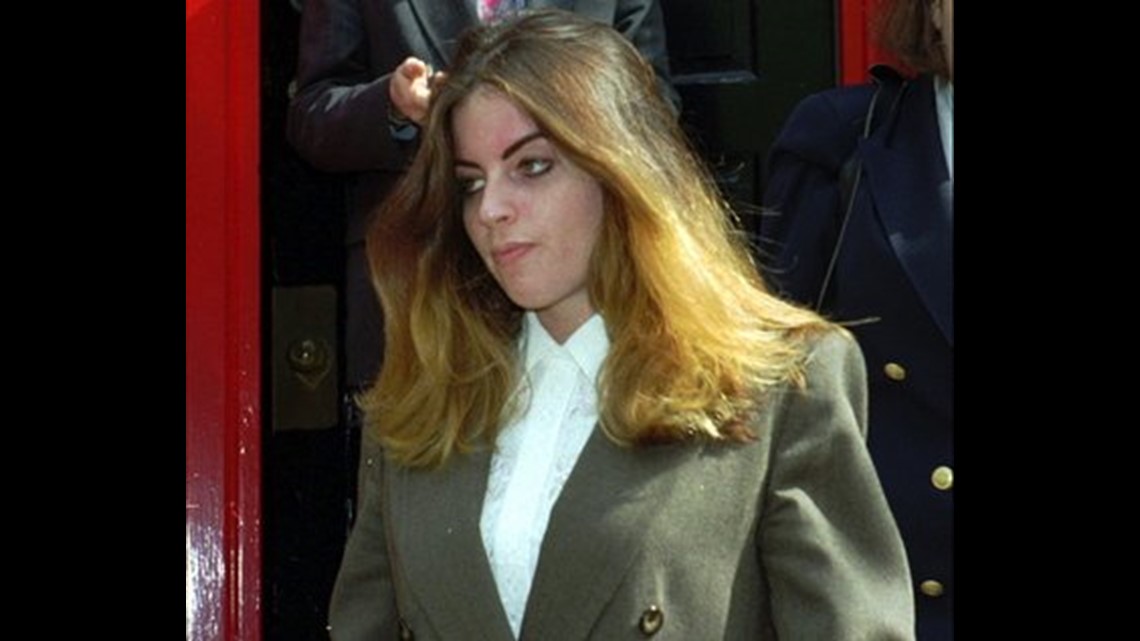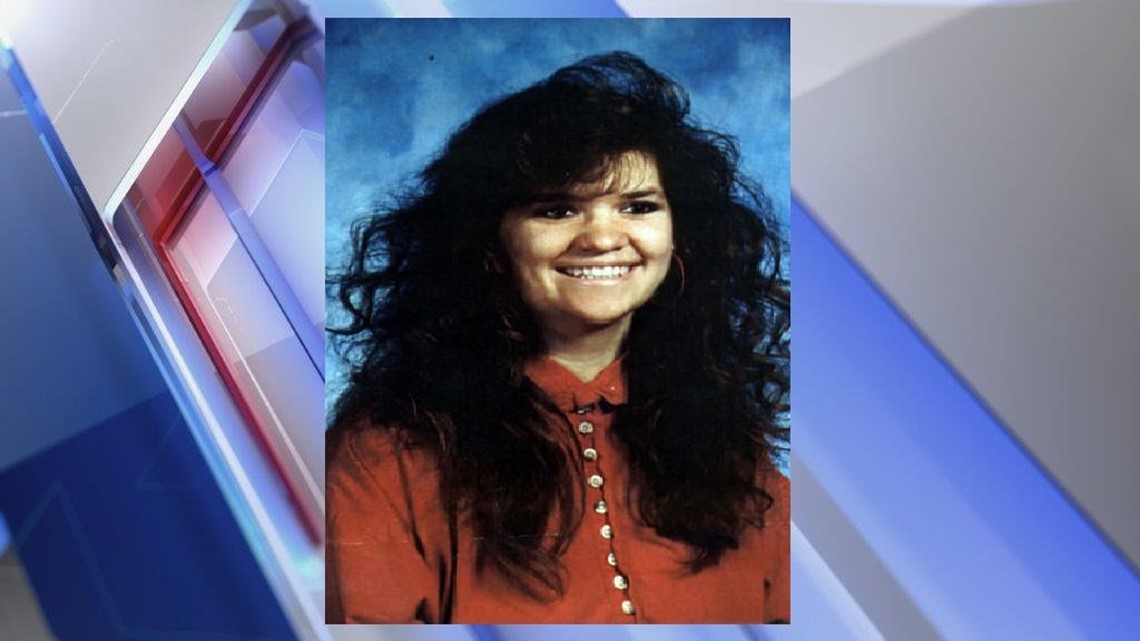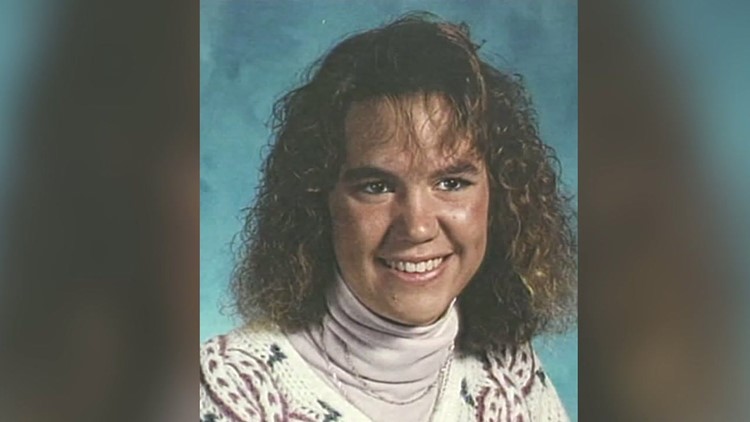The murder of Laurie Show, a 16-year-old Lancaster County high school student in 1991, sparked a furious amount of local and national media coverage during the trials of the three people convicted of conspiring to kill her: Lisa Michelle Lambert, Tabitha Buck, and Lawrence “Butch” Yunkin.
(Note: In initial court documents and media accounts of the crime and trials, Buck’s first name is spelled “Tabatha.”)
It was covered extensively by local TV and newspapers, was featured in episodes of true-crime news shows like “20/20” and “American Justice,” was the subject of a 2000 made-for-TV movie and a 2001 book.
Here’s a timeline of the story.
The Persons Involved
Laurie Show: A 16-year-old Conestoga Valley High School student, Show was involved with a feud with Lisa Michelle Lambert after Show briefly dated Lawrence Yunkin. Her mother, Hazel, later said her daughter told her Yunkin date raped her.
Classmates and co-workers of Show later said Lambert had been harassing and assaulting her for weeks leading up to her murder.


Lisa Michelle Lambert: A Conestoga Valley High School dropout, Lambert was 17 years old and reportedly pregnant with Yunkin’s child at the time of Show’s murder. Testimony later reveals Lambert was incensed when she discovered Show and Yunkin were dating the summer before Show was killed. Lambert and Tabitha Buck were accused of murdering Show, and both were sentenced to life in prison.
Lawrence Yunkin: A 20-year-old at the time of the murder, Yunkin admitted to driving Lambert and Buck to Show’s home on the morning of the murder and taking them from the scene after it occurred. After his arrest, he cooperated with prosecutors and testified against Lambert and Buck at their trials in exchange for a one-year prison sentence. But it is later determined that Yunkin committed perjury during his testimony, and his plea deal was withdrawn. He was tried and convicted of third-degree murder and received a 10- to 20-year prison term in 1992. He served 12 years in prison before being paroled in 2004, on his third attempt.


Tabitha Buck: Buck was a 17-year-old senior at Penn Manor High School and a friend of Lambert’s at the time of the murder. At her trial, Lambert’s defense claimed it was Buck and Yunkin who actually committed the murder, while she was merely an observer.
Buck’s defense team denied that claim.
Buck admitted she knocked on Show’s door when she and Lambert arrived at the home, sat on Show’s legs, and prevented her from leaving the home, but said it was Lambert who killed her.
Friday, Dec. 20, 1991: Laurie Show is murdered
On the morning of Friday, Dec. 20, 1991, Show is found by her mother in their East Lampeter Township home. She had been stabbed numerous times.
Later reports from investigators reveal Show had suffered a five-inch laceration to the throat, a stab wound that punctured a lung, a deep cut that penetrated her thigh to the pelvic bone, and another that grazed her spine. She also had sustained several wounds to the head and numerous defensive wounds.
Show’s mother, Hazel, had left home to speak to a guidance counselor at her daughter’s school at 7 a.m. It was later revealed that the appointment to see the counselor was a ruse perpetrated by the killers. When she returned home, Show’s mother later testified at numerous trials and hearings, she found her daughter clinging to life. She said Show identified her killer as Lambert, allegedly telling her “Michelle did it.”
Lambert, Yunkin, and Buck were arrested at the Garden Spot Bowling Center hours after the murder and arraigned a day later. Lambert and Buck were initially charged with criminal homicide and criminal conspiracy, while Yunkin was charged with hindering apprehension or prosecution.
Yunkin initally told police he thought Lambert and Buck were going to cut Show’s hair with the knife as a prank. He admitted that he helped provide an alibi and to dispose of evidence. His testimony would later change as Lambert and Buck both recanted their initial statements, with Lambert stating that an abusive Yunkin had encouraged her to harass and assault Show.
Lambert also attempted to implicate Buck as the person who actually stabbed Show, claiming she just watched as it happened.
March 1992: Death penalty sought against Lambert and Buck; both plead not guilty
Lancaster County prosecutors announced their intention to seek the death penalty against Lambert and Buck, who were accused of actually committing the murder.
Yunkin, who was accused of being an accessory to the crime, was charged with lesser offenses because of his secondary role and because he was cooperating with the prosecution.
On March 25, Lambert and Buck entered not guilty pleas to the murder charges.
July 1992: Lambert’s trial begins; Buck asked to be tried as juvenile
As the trial of Lambert began, Buck’s attorneys filed petitions for their client to be tried as a juvenile, a request that if granted would not only take the death penalty off the table, but could have potentially gotten Buck released in as little as four years.
Buck’s defense team argued that she should be tried as a juvenile because she was 17 when the crime occurred, had no prior criminal record, was amenable to treatment, and could receive proper treatment before she reached the age of 21. At age 21, all juvenile court defendants are released from court supervision.
Buck’s request was filed in early July 1992. By the end of the month, her defense team withdrew it. In exchange, prosecutors gave up their intent to seek the death penalty against her.
Meanwhile, at Lambert’s trial, testimony from police revealed Lambert gave several versions of what happened on the day Show was murdered — but said it was Buck who actually stabbed her. According to testimony from investigators at trial, Lambert told them she only watched while Buck stabbed Show.
Members of Lambert’s defense team also claimed in testimony that evidence from the scene indicated Show had written the initials “T.B.” in her own blood at the scene.
In contrast, Show’s mother testified that her daughter implicated Lambert with some of her last words.
Yunkin testified against Lambert, stating she and Buck had slit Show’s throat after an earlier stab wound had punctured one of Show’s lungs.
July 20, 1992: Lambert is convicted
Lancaster County Judge Lawrence Stengel, who at the request of the defense team heard the trial without a jury, convicts Lambert of first-degree murder and criminal conspiracy in the death of Show.
Lambert is sentenced to life in prison without parole — but her appeals are far from over. It is not until 2005 that Lambert runs out of appeals.
August 1992: Buck’s trial moved to Easton
The State Supreme Court moves Buck’s trial out of Lancaster County to Easton, Lehigh County, citing the intense media coverage the crime had received.
Oct. 1, 1992: Lehigh County jury convicts Buck
After an eight-day trial, Buck is found guilty of second-degree murder by a Lehigh County jury, which deliberated for about three hours. Reports of the trial indicate that jurors, prosecutors, and even Show’s mother weren’t sure whether it was Lambert or Buck who fatally stabbed Show, but believed that both Buck and Lambert participated in the crime.
Buck was sentenced to life in prison without parole. Her attorneys immediately appealed the verdict; beginning an appeals process that lasted three years. Ultimately, all those appeals were denied.
1997: Lambert appeals conviction to federal court and is briefly freed
In 1997, Lambert sent a hand-written letter of appeal to U.S. District Judge Stewart Dalzell, who orders a review of the case.
At the hearing before Dalzell in federal court, Lambert claimed Yunkin was abusive and pushed her to assault Show out of fear he would be jailed on charges that he raped her. She claimed it was Buck who murdered Show, and that she had fled the scene, only to be stopped by Yunkin. Lambert’s new defense team claimed there were numerous incidents where prosecutors and investigators committed misconduct in an effort to implicate their client.
After the three-week hearing concluded, Dalzell wrote a scathing review of the case, in which he determined Lambert was “actually innocent,” ripped the Lancaster County investigators, prosecutors, and judges in the case, and ordered Lambert freed.
1998: Lambert is returned to prison
Almost 10 months after Dalzell’s bombshell, Lambert was re-tried in Lancaster County, after the Pennsylvania Supreme Court ruled she had not yet exhausted her appeals at the state level and therefore could not appeal her conviction in a federal court.
The new trial, held before Stengel in Lancaster County Court, ruled to uphold Lambert’s original conviction and sentence. She is returned to prison to resume her life sentence.
Lambert attempted to an appeal to the U.S. Supreme Court in 2003, but the appeal is denied.
Her final appeals were exhausted in 2005.
November 2017: Buck receives a new sentence and parole eligibility
A 2012 decision by the U.S. Supreme Court deemed life sentences against juvenile offenders unconstitutional, which allows Buck to receive a hearing for a new sentence. The decision also made Buck eligible to receive parole.
Lancaster County President Judge Dennis Reinaker ordered Buck’s new sentence to be 28 years to life. Since Buck had already served 26 years, she became eligible for parole in 2020.
Prosecutors argued Buck should serve at least 30 years before becoming eligible for parole, pointing to the crime’s devastation on Show’s surviving family and the community. Assistant District Attorney Susan Moyer also said Buck never expressed remorse for what she did.
Show’s mother read a statement at the hearing.
“Laurie died a horrible life… for reasons I will never understand,” she read.
“Why did you agree to come to our house that morning?” she asked Buck.
Buck testified Monday for about 15 minutes. When asked by the president judge about the crime, Buck said she “can’t imagine” how Laurie’s and her own families feel about the re-sentencing, but said nothing about the crime.
August 2019: Buck is granted parole
The state Board of Probation granted Buck parole, listing her earliest possible release date as Dec. 21. She is barred from residing in or traveling to Lancaster County, prohibited from contacting Show’s family, and required to take psychiatric medication as prescribed by a doctor.
As part of her terms of release, Buck, whose name also appears as Tabatha Buck in documents over the years since her arrest, cannot reside or travel in Lancaster County, must avoid any contact with Show’s family and must take psychiatric medication as prescribed by her doctor, according to the board’s decision.
Lancaster County District Attorney’s Office spokesperson Brett Hambright issued the following statement from District Attorney Craig Stedman on Buck’s parole:
The resentencings of juvenile murderers has been one of the most difficult and gut-wrenching tasks we have ever had to handle. Our system told victims’ families their case was over, and in many cases, for decades.The courts ruled and we follow the law, but that in no way diminishes the added emotional trauma this process has caused to those who have already suffered.Most of all, we must remember the innocent victims, whose lives were taken, have no ability to appeal or receive a new sentence.
Sources: FOX43 archives, LancasterOnline



